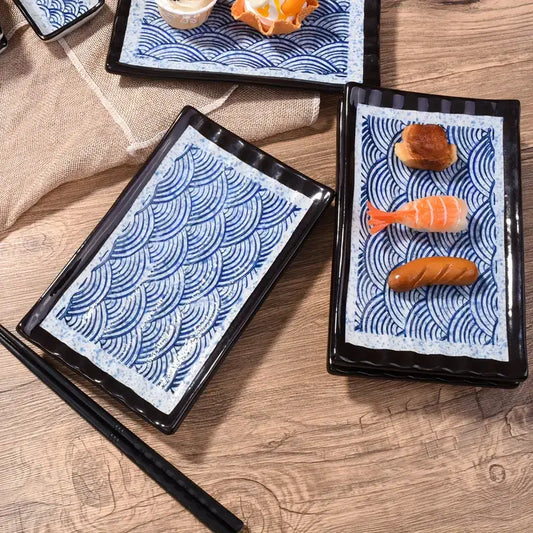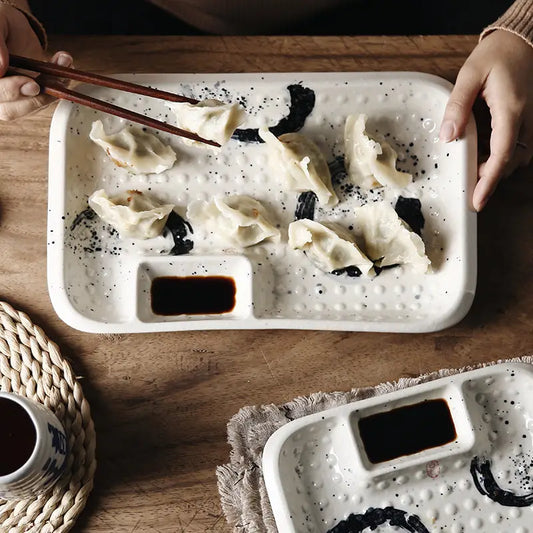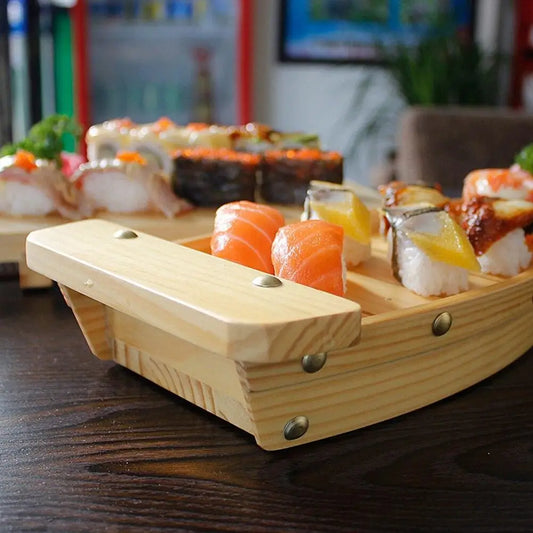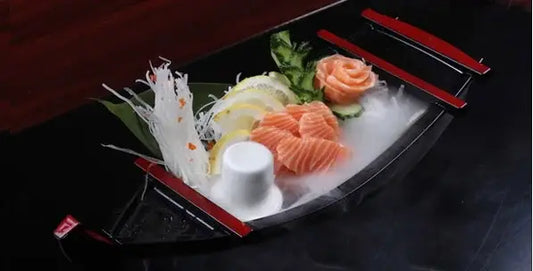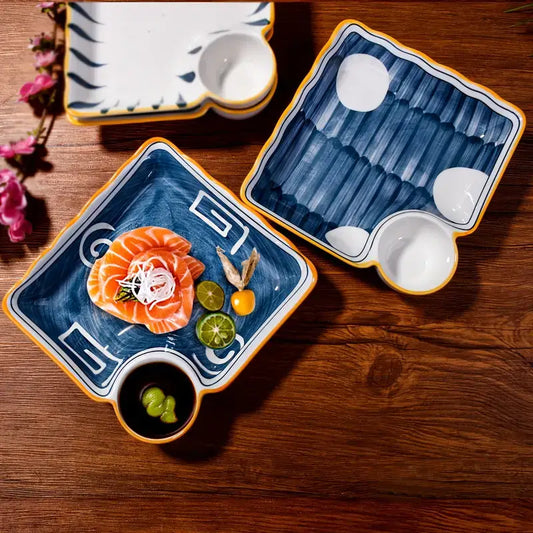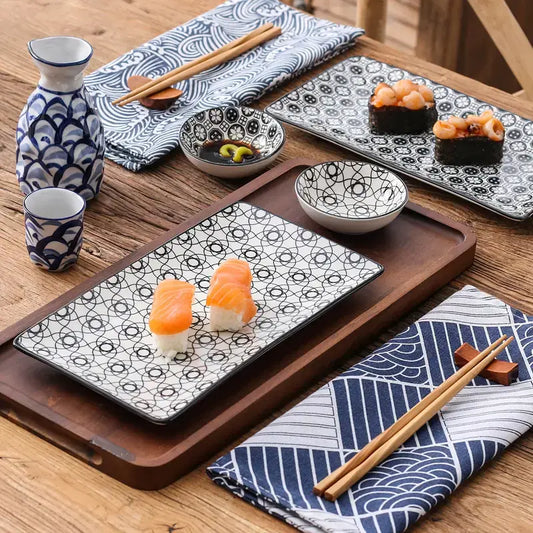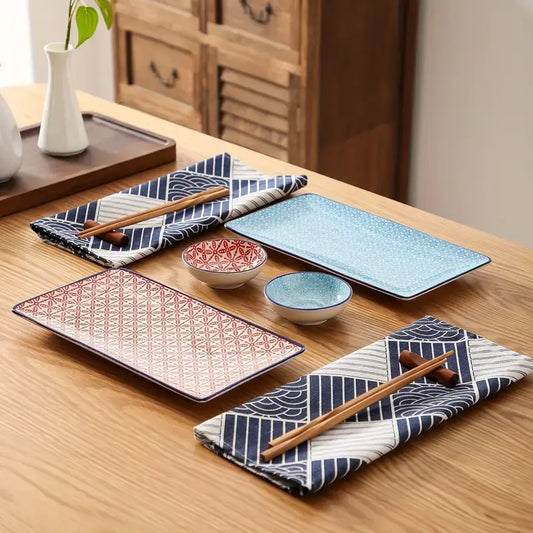Crafted Elegance: Discover the Art of the Japanese Plate
Understated yet unforgettable, the Japanese plate is more than tableware — it is a celebration of harmony, form, and culinary presentation. Whether it holds a single piece of sushi, a slice of grilled fish, or a carefully arranged dessert, the Japanese plate transforms dining into a visual and cultural experience.
From hand-glazed ceramics to fine porcelain, from rustic square dishes to flower-shaped saucers, Japanese plates are designed to honor food, elevate simplicity, and reflect the beauty of nature. Their versatility bridges both traditional meals and contemporary kitchens with ease.
A Legacy of Taste and Design: The History of Japanese Plates
The evolution of Japanese plates can be traced back to the Heian period and the rise of courtly dining. Influenced by Chinese porcelain and deeply connected to the principles of wabi-sabi and seasonal awareness, plateware became both a utility and a canvas for expression.
| Plate Type | Traditional Use | Common Material |
|---|---|---|
| Mamezara | Soy sauce, condiments, pickles | Porcelain, pottery |
| Chuzara | Side dishes, sashimi | Glazed ceramic, porcelain |
| Ozara | Main course, shared dishes | Lacquerware, stoneware |
| Mukozuke | Seasonal sashimi, elegant appetizers | Artistic ceramics |
| Dessert Plate | Wagashi, fruits | Floral porcelain, bamboo |
Japanese plates are not just functional objects; they are expressions of seasonality, story, and care.
Why Japanese Plates Are Essential to Mindful Dining
Every plate serves more than food — it serves meaning:
🌟 Visual Balance: Plates are chosen to enhance the colors and composition of the dish.
🖌️ Artistry in Texture: Glazing, engraving, and subtle imperfections make each piece one-of-a-kind.
🌿 Connection to Nature: Many designs mimic leaves, waves, or seasonal blooms.
🍲 Respect for the Meal: Presenting food beautifully is a gesture of gratitude.
🪤 Function Meets Philosophy: Light, minimal, and perfectly sized for portion harmony.
From Kaiseki cuisine to casual rice bowls, the right plate elevates each bite.
Styling Your Table with Japanese Plates: Beauty in Every Setting
Pair your Japanese plates with intention and artistry to create an immersive dining experience.
| Setting | Plate Type | Pairing Elements |
| Modern Minimalist | Matte gray ozara | Linen napkin, chopstick rest |
| Wabi-Sabi Rustic | Unglazed chuzara | Wood tray, natural light |
| Seasonal Kaiseki | Hand-painted mukozuke | Branch centerpiece, lacquer bowl |
| Tea & Sweets | Floral dessert plate | Matcha cup, folded tenugui cloth |
| Family Style | Stoneware ozara | Shared dishes, ceramic ladles |
Tips:
-
Use mismatched sets for a lived-in aesthetic.
-
Choose colors that complement your food.
-
Layer with natural materials: bamboo, slate, or linen.
Pairings and Accessories That Complete the Meal
Enhance your table with items that harmonize with your plate collection:
| Accessory | Purpose |
| Chopstick rests | Keeps utensils tidy and elegant |
| Sake set | Adds ceremonial balance to meals |
| Ceramic soy sauce dishes | Matches glaze and form |
| Bamboo placemats | Frames each plate with warmth |
| Small flowers or leaves | Reflects nature and seasonality |
Together, these elements create an atmosphere of calm, appreciation, and mindful indulgence.
A Plate That Holds More Than Food
The Japanese plate is not just a surface — it is an extension of the cook’s heart and the diner’s senses. Through careful design and quiet beauty, it turns each meal into a poetic ritual.
To serve on a Japanese plate is to honor taste, time, and tradition.
Let the colors shine. Let the details speak. Let each plate become part of your story.
The Japanese plate is elegance, encoded in clay






